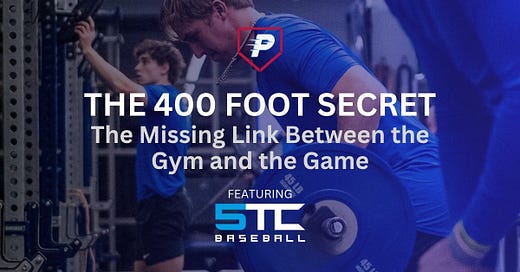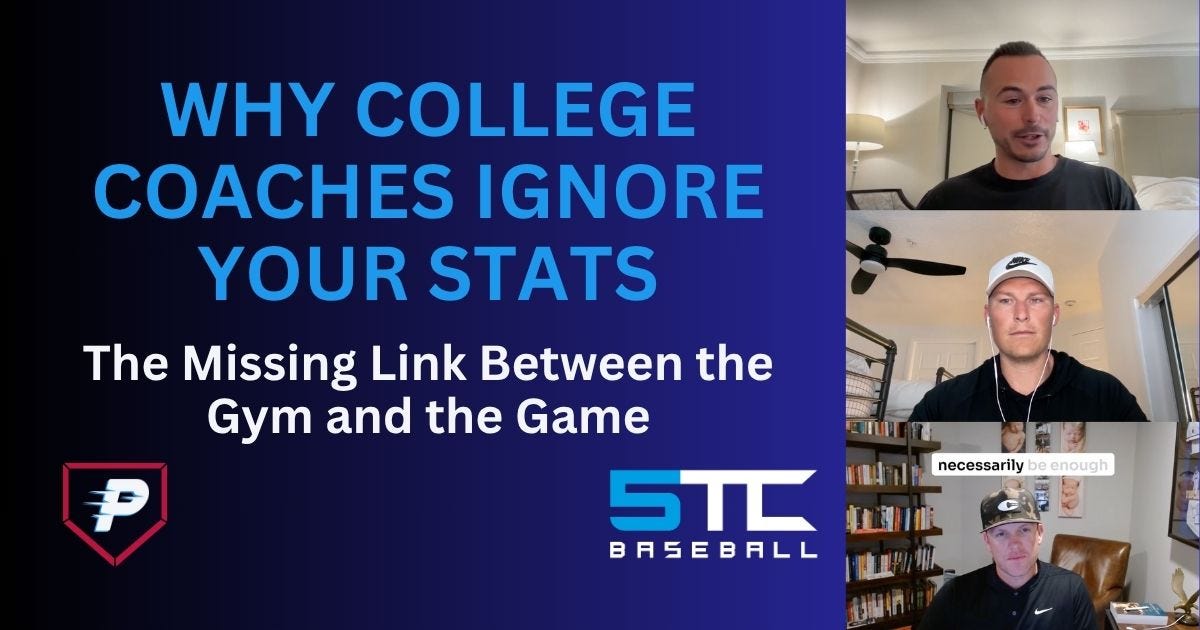We recently sat down with Eric Yavarone and Noah Huff from 5 Tool Connection to discuss something too many baseball families overlook: how physical development can make or break your recruiting journey. What they shared is absolutely essential information for any player (and family!) that wants to play college baseball.
The Tale of Two Shortstops
Eric painted a perfect picture that every parent and player needs to hear. Imagine two shortstops: both 6'1", 185 pounds, both talented. One is explosive and covers tons of ground but moves stiffly. The other is silky smooth but lacks that initial burst.
"Right out of the shoot, these are different people," Eric explained. The explosive kid needs movement work to unlock his existing strength. The smooth player needs to build more muscle mass and power. Same position, same size, completely different training needs.
This is why cookie-cutter programs fail. It's why some kids dominate the weight room but struggle to translate that strength to the field – something I experienced firsthand during my playing days.
Why Metrics Matter More Than High School Stats
Noah and Eric explained why college coaches increasingly focus on "baseball performance outcomes" – exit velocity, throwing velocity, 60-yard times – over traditional statistics.
A player hitting .280 with high exit velocity often gets recruited over the .400 hitter with weak contact. Why? Because coaches are always focused on predicting upside. They see the physical tools that translate across competition levels, not just stats that might depend on weak local competition.
"Schools want to predict upside," Eric noted. "How do you predict upside? You got to see what's under the hood."
The Evolution of Training
The biggest shift in baseball development? We've moved from "baseball players can't lift weights" to understanding that movement is movement – whether in the gym or on the field.
Modern programs don't just build bigger, stronger players. They create movement efficiency that transfers directly to baseball skills. Eric's work with major league players has shown him that the best athletes have individualized programs connecting their physical development to their specific movement patterns.
Starting Young, But Starting Smart
When should physical development begin? 5TC works with players as young as eight or nine, but it's not what you'd expect. At that age, it's about movement competency, body awareness, and playing multiple sports.
"Training when they're really young should be playing, going outside, doing stuff, variability in movement," Eric emphasized. The goal is building a foundation for future strength development, not throwing kids under barbells.
But if you're in high school and serious about baseball? "Start yesterday," both coaches agreed. You're already behind if you don't have an individualized strength and conditioning program.
The Real Game Changer
What separates 5 Tool Connection's is their approach. Nothing is cookie cutter. Everything they do - from their initial evaluation to they player evaluations to their customized pre-swing/pre-throw routines and training programs - is about helping baseball athletes connect the weight room to the baseball field.






